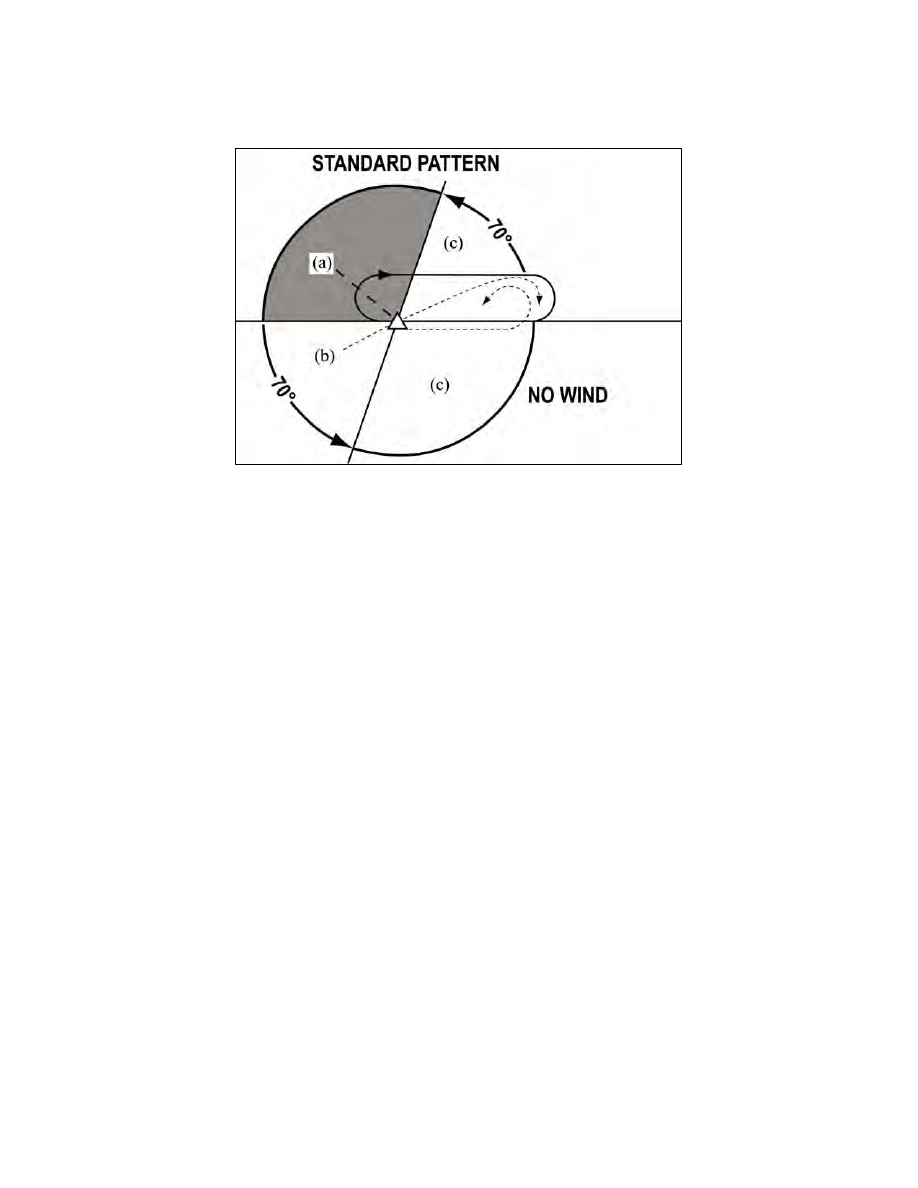
AIM
4/3/14
5−3−12
En Route Procedures
FIG 5
−3−4
Holding Pattern Entry Procedures
3. Entry Procedures.
(a) Parallel Procedure.
When approaching
the holding fix from anywhere in sector (a), the
parallel entry procedure would be to turn to a heading
to parallel the holding course outbound on the
nonholding side for one minute, turn in the direction
of the holding pattern through more than 180 degrees,
and return to the holding fix or intercept the holding
course inbound.
(b) Teardrop Procedure.
When approach-
ing the holding fix from anywhere in sector (b), the
teardrop entry procedure would be to fly to the fix,
turn outbound to a heading for a 30 degree teardrop
entry within the pattern (on the holding side) for a
period of one minute, then turn in the direction of the
holding pattern to intercept the inbound holding
course.
(c) Direct Entry Procedure.
When ap-
proaching the holding fix from anywhere in
sector (c), the direct entry procedure would be to fly
directly to the fix and turn to follow the holding
pattern.
(d)
While other entry procedures may enable
the aircraft to enter the holding pattern and remain
within protected airspace, the parallel, teardrop and
direct entries are the procedures for entry and holding
recommended by the FAA.
4. Timing.
(a) Inbound Leg.
(1)
At or below 14,000 feet MSL: 1 minute.
(2)
Above 14,000 feet MSL: 1
1
/
2
minutes.
NOTE
−
The initial outbound leg should be flown for 1 minute or
1
1
/
2
minutes (appropriate to altitude). Timing for
subsequent outbound legs should be adjusted, as
necessary, to achieve proper inbound leg time. Pilots may
use any navigational means available; i.e., DME, RNAV,
etc., to ensure the appropriate inbound leg times.
(b) Outbound leg
timing begins over/abeam
the fix, whichever occurs later. If the abeam position
cannot be determined, start timing when turn to
outbound is completed.
5. Distance Measuring Equipment (DME)/
GPS Along
−Track Distance (ATD). DME/GPS
holding is subject to the same entry and holding
procedures except that distances (nautical miles) are
used in lieu of time values. The outbound course of
the DME/GPS holding pattern is called the outbound
leg of the pattern. The controller or the instrument
approach procedure chart will specify the length of
the outbound leg. The end of the outbound leg is
determined by the DME or ATD readout. The holding
fix on conventional procedures, or controller defined
holding based on a conventional navigation aid with
DME, is a specified course or radial and distances are
from the DME station for both the inbound and